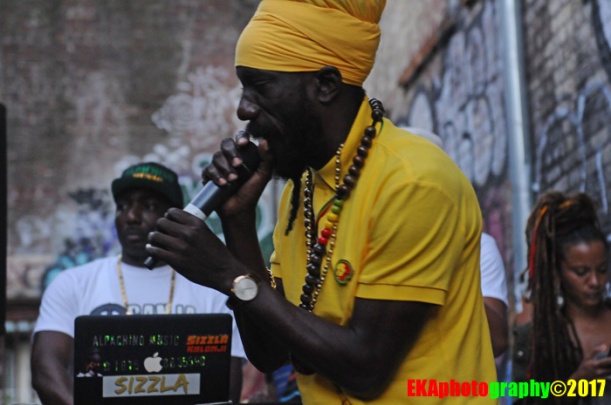
I’ve been blessed enough to see Sizzla Kalonji a bunch of times, over the years. There was an amazing set at Reggae Rising – the short-lived offshoot of Reggae on the River – up in Humboldt; a fiery, defiant show at the Independent in San Francisco; and a steamy throwdown at Venue (now called Complex) in Oakland—which may have been the artist’s first time in the East Bay. Those were all special shows in their own way. To that list, I can now add Sizzla’s performance at the inaugural Oaktown Reggae Festival this past weekend.
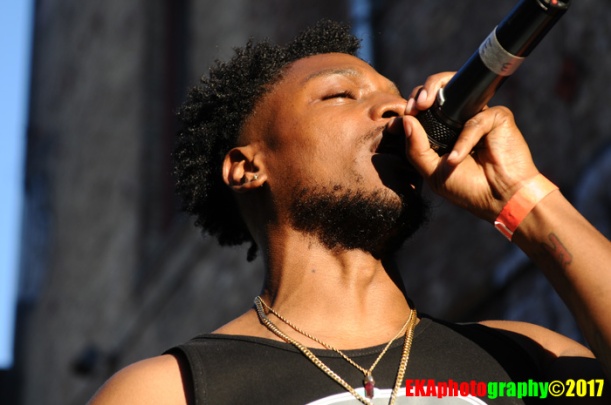
Temperatures soared into the upper 80s for Saturday’s event. In actuality, it felt much hotter, in part due to the urban heat island effect, whereby surface temperatures can be as much 20-30 degrees warmer than air temperatures, due to heat reflecting off of concrete and asphalt. However, I’m not complaining: this was perfect reggae weather, sort of urban tropical, if you know what I’m saying.

The festival was inside of Level 13, the former Shadow Lounge and Maxwell’s, now owned by Richard Ali of New Karribean City, a longtime supporter of both reggae and hip-hop live music. The show was co-promoted by Ali and Jonathan Mack, a Trinidadian native and also a longtime supporter of reggae and Caribbean culture whom many Bay Area music fans might remember for his production company Angel Magik (which has been active for more than a decade).
Inside the expansive club, a rotation of DJs spun dancehall classics (always nice to hear Sister Nancy’s “Bam Bam”), as bartenders poured beers and mixed cocktails. The performance stage was in the back, a graffiti-ied-up alley in-between Franklin and Harrison Streets. This proved to be a perfect location for this event.

It’s one thing to see a major artist at a huge concert venue or a fancy club. At Reggae Rising, huge video monitors projected a live music feed so that the 30,000 people in attendance could see. At the Independent and Complex, the shows weren’t quite as mega, but there’s still a feeling of the artist being somewhat out of their environment. The Level 13 show was easily the most-accessible and intimate Sizzla performance I’ve yet seen, and the locale was perhaps the most authentic. The tag-saturated alley resonated with “yard” vibes – making it almost seem as if it was happening in the Caribbean, not Oakland. I’m not sure whether is had any effect on Sizzla, but he seemed perfectly in his element and extremely comfortable.
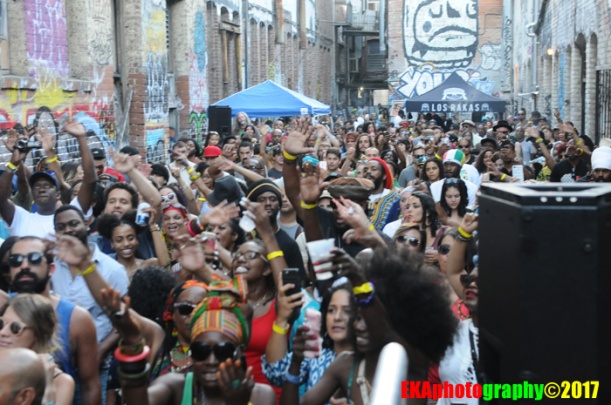
The show itself was pretty off the hook. Sporting the trademark turban of the Bobo Ashanti, a yellow shirt, and various accoutrements, including a silver bracelet and a beaded necklace, Sizzla looked every bit the cultural icon he has become – a symbol of liberation for the ghetto youth. There was little in-between-song patter; evidently the artist just wanted to get right to it. The set list included many of Sizzla’s classic, well-known songs—I think I heard “Praise Ye Jah” and “Babylon Ah Listen”—which went over well with the reggae-loving audience. (I’ve seen shows where artists have concentrated on more recent material and Jamaican singles which audiences may not know, and then be miffed the songs didn’t get the response they expected. Thankfully, that didn’t happen here).
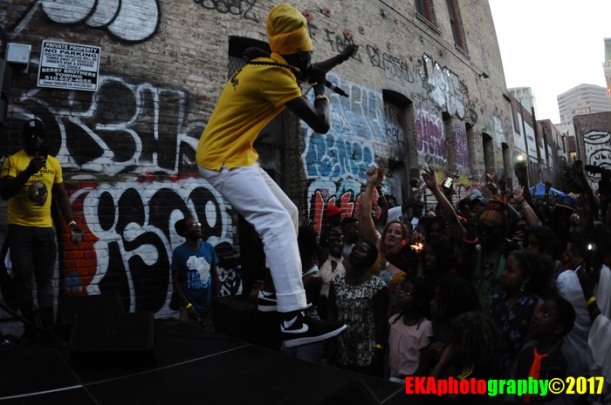
The set built on earlier performances by Shiloh, Pressure, and Los Rakas, which were also top-notch. Toward the end, which extended past the listed 9pm closing time (are you listening, BottleRock?), Sizzla opened up the stage for some combination tunes with Ras Shiloh, which then evolved into a full-blown reggae cipher, with numerous emcees touching the mic, before returning to take center stage and voice a few more lyrics. Sizzla’s dynamic stage presence oth engaged and excited the crowd, and the overall vibe was one of niceness and irie iration.
Sizzla has always presented a fascinating mix of militant stridency and heartfelt compassion — a dichotomy he has leveraged into a long career, which began in the mid-90s. He’s not a pop artist out to make a quick buck off a trendy dance move, but a force of culture who has withstood the test of time, in an industry with a high turnover rate.
On top of that, he’s always been a rebel, unafraid to name exactly what’s wrong with the system, and what the solution should be. It did not go unnoticed that the alley which contained the stage was directly behind the Tribune Tower, the iconic symbol of Oakland. The tower could actually be seen from the stage, and, in this context, it took on a deeper metaphorical significance, as the stand-in for the tower of Babel, the symbol of Babylon (a Rastafarian term for systemic oppression and non-conscious thought). It’s quite possible this also occurred to Sizzla, although it’s equally unclear if this would have made a difference, either way. As long as people showed up, Sizzla was going to do his thing, regardless.
Overall, the show was a success. It could have been better-attended, but that would have also meant more crowd density and less personal space (and comfort) for each guest. The crowd was just big enough, without being overstuffed, and one would have to say, that’s pretty good, considering that much of the Bay Area reggae massive was at the Sierra Nevada World Music festival happening the same day.
All in all, it’s good for reggae to have a home in Oakland, and when I say reggae, I mean real, culturally–authentic reggae. The Oaktown Reggae Festival definitely has the potential to become an annual event, and I hope that happens. I don’t know if the niceness of the vibes was connected to the fact that both Ali and Mack are from the Caribbean themselves (and not just a typical Western promoter), but those vibes were very much appreciated in this age of Trumpism.
The show also brought back fond memories of day parties at Oasis at nearby 12th St., a longtime sanctuary for reggae and world music, which has now become the gentrified Mad Oak bar. And, the festival also hinted at the possibilities of many more such culturally-themed events within the Black Arts Movement Business District which is just beginning to emerge. (Full disclosure: the author is the Co-Director of BAMBD CDC,a community development corporation working to promote cultural and economic development within the district, and part of a group working with Councilmember McElhaney’s office to promote BAMBD, along with Ali, the Malonga Advisory Committee, 310 gallery, and others.)
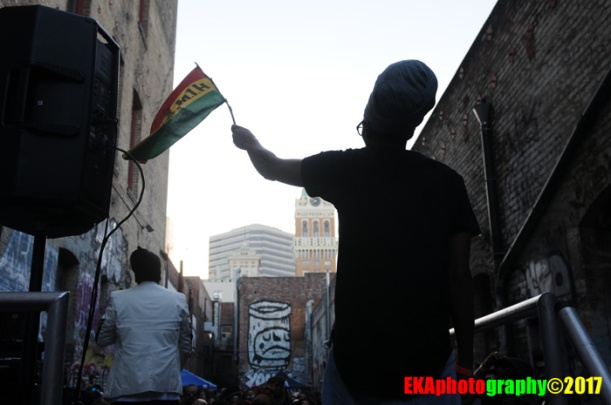
(Editor’s note: this post has been updated to reflect the contributions of Jonathan Mack, who was inadvertently omitted. Oakulture sincerely apologizes for any misunderstanding or inconvenience caused by this, and wants to further add, “Big Up” to both Ali and Mack for keeping reggae music alive and sizzling in Oakland).










